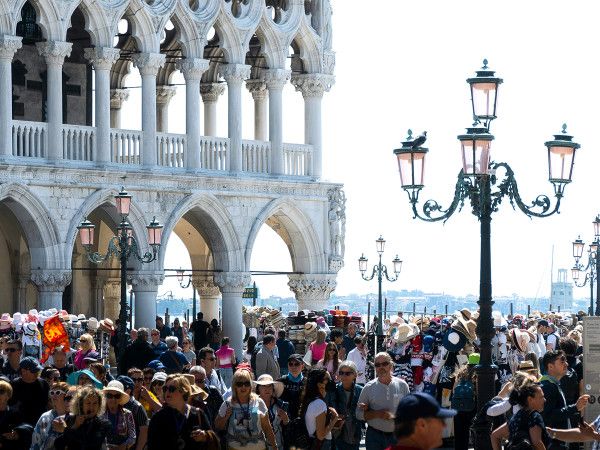Venice it is a fish-shaped city. Every day of the year it is teeming with tourists. Several times a year the rains raise the water level, flooding streets and fields. Once a year it is filled with stars for the Film Festival and, always once a year, the population dresses up to celebrate Carnival. Every two yearshowever, the fish-shaped city becomes the world capital of contemporary art on the occasion of Venice International Art Biennial.
The Venice International Art Biennale is one of the most important and prestigious artistic events in the world. Some say that if art were a sport it would be an Olympics! The Biennial she was born in 1895 when Italy was a country still fresh from unification and needed great events full of beauty and culture to be able to embrace it all and shine among the other countries.
At the time, large international exhibitions were organized in which each nation showed off its culture and modernity in an atmosphere of competition. The Venice Biennale was born somewhat in the same spirit. Then as now, every two years, the countries present each exhibit the best works of today’s artists in a pavilion.
As with the themes and research at school, the Biennale also has a track that inspires the artists. This year, the theme is Strangers everywhere – Strangers everywhere. It’s a very clever and interesting title because it has at least two meanings. It may mean that there are foreigners everywhere around us but also that wherever we go, we are always foreigners.
The idea behind this theme is to talk about those who live on the marginsfar from what is considered – wrongly – the center of the world, that is, the West. Migrants, marginalized people, women, LGBTQIA+ people, minorities they are in fact the protagonists of this sixtieth edition.
This year’s Biennial, which began on April 20 and will close on November 24thshows off 331 artists from 88 countries. Among them there are many who come from indigenous populations and from the southern hemisphere and many of them identify as queer. In short, “foreigners everywhere” are not only the object of art but also the subject, those who make it.
In addition to the theme of this edition, which is an invitation to represent people forgotten by society, the Biennale was shaken by the effects of the two great ongoing wars, that between Israel and Palestine and that between Russia and Ukraine. The Israeli artists have decided to protest by not opening their pavilion until there is a ceasefire in the Gaza Strip and the release of the Israeli hostages. The Russian artists, however, to protest against their own country’s invasion of Ukraine, gave up their pavilion to Bolivia.
The fact is that art can do many things – talk about the world, soothe the wounds, make us feel less alone and less alone – but he can’t pretend nothing happened.
Inspired by the success of Venice, Over the years, many Biennials have sprung up around the world. There are some in Brazil, China, the United Arab Emirates, South Korea…
With the end of the colonies, that is, the unjust domination of European countries over other Africans, Asians and South Americans, the world has gradually become larger, more beautiful and more varied. New voices from other countries, with other realities, other roots, have been added to Europe and the West, and the Biennials have become a way to tell their own unique story that many centuries of domination had silenced.
Unlike the Venice Biennale, however, the other Biennials do not divide the artists into national pavilionsperhaps because borders and barriers never remind us of anything very good and, if art can do without a passport, we might as well let it travel free.
by Eloisa Del Giudice
3 min read

by Alexandra Suraj
5 min read








